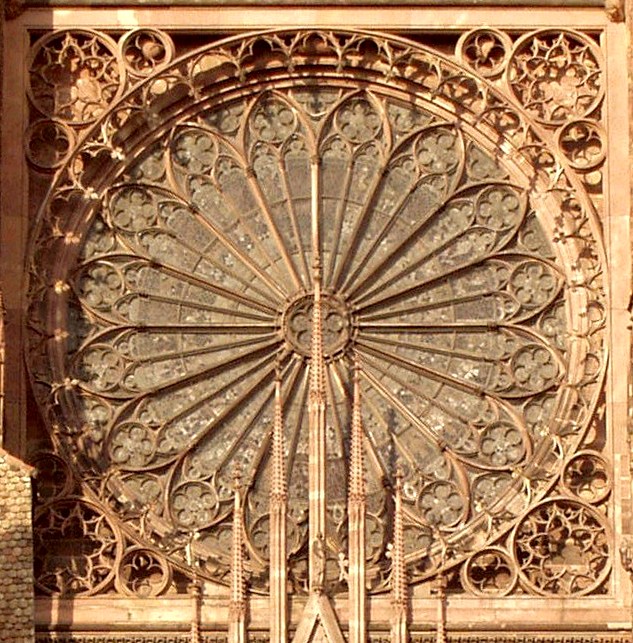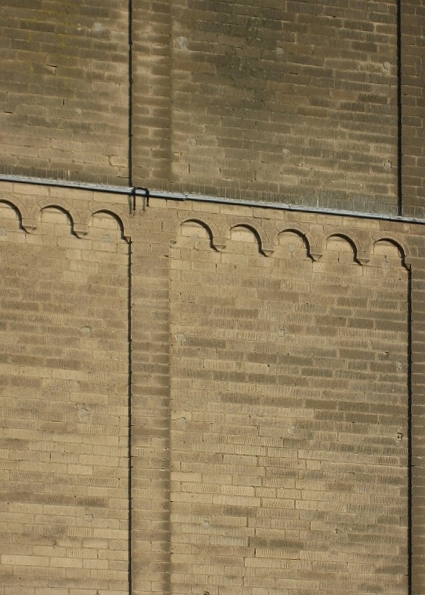|
Monza Cathedral
The Duomo of Monza (), often known in English as Monza Cathedral, is the main religious building of Monza, Italy. Unlike most duomi, it is not in fact a cathedral, as Monza has always been part of the Diocese of Milan, but is in the charge of an archpriest who has the right to certain episcopal vestments including the mitre and the ring. The church is also known as the Basilica of San Giovanni Battista from its dedication to John the Baptist. History The basilica, which would in essence have been completed by 603 when heir to the Lombard throne Adaloald was baptised here by Secundus of Non, is believed to have been commissioned towards the end of the sixth century by the Lombard Queen of Italy, Theodelinda, as a royal chapel to serve the nearby palace.‘Storia de ... [...More Info...] [...Related Items...] OR: [Wikipedia] [Google] [Baidu] [Amazon] |
Monza
Monza (, ; ; , locally ; ) is a city and ''comune'' (municipality) on the Lambro, River Lambro, a tributary of the Po (river), River Po, in the Lombardy region of Italy, about north-northeast of Milan. It is the capital of the province of Monza and Brianza. Monza is best known for its Grand Prix motor racing circuit, the , which hosts the Formula One Italian Grand Prix.On 11 June 2004, Monza was designated the capital of the new province of Monza and Brianza. The new administrative arrangement came fully into effect in summer 2009; previously, Monza was a ''comune'' within the province of Milan. Monza is the third-largest city of Lombardy and is the most important economic, industrial and administrative centre of the Brianza area, supporting a textile industry and a publishing trade. Monza also hosts a department of the University of Milano-Bicocca, a Court of Justice and several offices of regional administration. Monza Park is one of the largest urban parks in Europe. Geog ... [...More Info...] [...Related Items...] OR: [Wikipedia] [Google] [Baidu] [Amazon] |
Theodelinda
Theodelinda, also spelled ''Theudelinde'' ( 570 – 628 AD), was a queen of the Lombards by marriage to two consecutive Lombard rulers, Autari and then Agilulf, and regent of Lombardia during the minority of her son Adaloald, and co-regent when he reached majority, from 616 to 626. For well over thirty years, she exercised influence across the Lombard realm, which comprised most of Italy between the Apennines and the Alps. Life She was the daughter of duke Garibald I of Bavaria and Waldrada. Born a Bavarian princess to King Garibald, Theodelinda's heritage included being descended on her mother's side from the previous Lombard king, Waco, whose family had ruled seven generations prior according tradition. First marriage Theodelinda was married first in 588 to Authari, king of the Lombards, son of King Cleph. There are indications that Pope Gregory I may have had an interest in encouraging this marriage as it would tie a Bavarian Catholic with the Arian Lombards, something he ... [...More Info...] [...Related Items...] OR: [Wikipedia] [Google] [Baidu] [Amazon] |
Gargoyle
In architecture, and specifically Gothic architecture, a gargoyle () is a carved or formed Grotesque (architecture), grotesque with a spout designed to convey water from a roof and away from the side of a building, thereby preventing it from running down masonry walls and eroding the Mortar (masonry), mortar between. Architects often used multiple gargoyles on a building to divide the flow of rainwater off the roof to minimize potential damage from rainstorms. A trough is cut in the back of the gargoyle and rainwater typically exits through the open mouth. Gargoyles are usually elongated fantastical animals because their length determines how far water is directed from the wall. When Gothic art, Gothic flying buttresses were used, aqueduct (watercourse), aqueducts were sometimes cut into the buttress to divert water over the aisle walls. Etymology The term originates from the French language, French ''gargouille'' (Old French ''gargoule'' (1294) "conduit for waterflow"), com ... [...More Info...] [...Related Items...] OR: [Wikipedia] [Google] [Baidu] [Amazon] |
Gothic Art
Gothic art was a style of medieval art that developed in Northern France out of Romanesque art in the 12th century, led by the concurrent development of Gothic architecture. It spread to all of Western Europe, and much of Northern Europe, Northern, Southern Europe, Southern and Central Europe, never quite effacing more classical styles in Italy. In the late 14th century, the sophisticated court style of International Gothic developed, which continued to evolve until the late 15th century. In many areas, especially Germany, Late Gothic art continued well into the 16th century, before being subsumed into Renaissance art. Primary media in the Gothic period included sculpture, panel painting, stained glass, fresco and illuminated manuscripts. The easily recognisable shifts in architecture from Romanesque to Gothic, and Gothic to Renaissance styles, are typically used to define the periods in art in all media, although in many ways figurative art developed at a different pace. The ear ... [...More Info...] [...Related Items...] OR: [Wikipedia] [Google] [Baidu] [Amazon] |
Romanesque Architecture
Romanesque architecture is an architectural style of medieval Europe that was predominant in the 11th and 12th centuries. The style eventually developed into the Gothic style with the shape of the arches providing a simple distinction: the Romanesque is characterized by semicircular arches, while the Gothic is marked by the pointed arches. The Romanesque emerged nearly simultaneously in multiple countries of Western Europe; its examples can be found across the continent, making it the first pan-European architectural style since Imperial Roman architecture. Similarly to Gothic, the name of the style was transferred onto the contemporary Romanesque art. Combining features of ancient Roman and Byzantine buildings and other local traditions, Romanesque architecture is known by its massive quality, thick walls, round arches, sturdy pillars, barrel vaults, large towers and decorative arcading. Each building has clearly defined forms, frequently of very regular, symmetrical ... [...More Info...] [...Related Items...] OR: [Wikipedia] [Google] [Baidu] [Amazon] |
Rose Window
Rose window is often used as a generic term applied to a circular window, but is especially used for those found in Gothic cathedrals and churches. The windows are divided into segments by stone mullions and tracery. The term ''rose window'' was not used before the 17th century and comes from the English flower name rose. The name "wheel window" is often applied to a window divided by simple spokes radiating from a central boss or opening, while the term "rose window" is reserved for those windows, sometimes of a highly complex design, which can be seen to bear similarity to a multi-petalled rose. Rose windows are also called "Catherine windows" after Saint Catherine of Alexandria, who was sentenced to be executed on a spiked breaking wheel. A circular window without tracery such as are found in many Italian churches, is referred to as an ocular window or Oculus (architecture), oculus. Rose windows are particularly characteristic of Gothic architecture and may be seen in all th ... [...More Info...] [...Related Items...] OR: [Wikipedia] [Google] [Baidu] [Amazon] |
Lesene
A lesene, also called a pilaster strip, is an architectural term for a narrow, low-relief vertical pillar on a wall. It resembles a pilaster, but does not have a base or capital. It is typical in Lombardic and Rijnlandish architectural building styles. Function Lesenes are used in architecture to vertically divide a façade or other wall surface optically. However, unlike pilasters, lesenes are simpler, having no bases or capitals. Their function is ornamental, not just to decorate the plain surface of a wall but, in the case of corner lesenes (at the edges of a façade), to emphasise the edges of a building. Gallery File:Lisene2.jpg, Lesenes and Lombard band (arches) on a chapel File:Lisene-Ravenna.jpg, Lesenes forming blind arcades, Mausoleum of Galla Placidia, Ravenna (); dentils under the eaves. File:Gernrode-Lisene.jpg, Lesene on the staircase tower, Gernrode collegiate church (pre-1000) File:Maria Laach.jpg, Lesenes on the Maria Laach Abbey (1156) File:Saxon tower - ... [...More Info...] [...Related Items...] OR: [Wikipedia] [Google] [Baidu] [Amazon] |
Matteo Da Campione
Matteo is the Italian form of the given name Matthew. Another form is Mattia. The Hebrew meaning of Matteo is "gift of god". Matteo can also be used as a patronymic surname, often in the forms of de Matteo, De Matteo or DeMatteo, meaning " escendantof Matteo". Given name Matteo * Matteo Bandello, Italian novelist * Matteo Berrettini (born 1996), Italian tennis player * Matteo Bisiani, Italian archer * Matteo Maria Boiardo, Italian Renaissance poet * Matteo Fedele (born 1992), Swiss footballer * Matteo Ferrari, Italian football player who currently plays for Montreal Impact * Matteo Goffriller, renowned 18th-century Italian cello maker * Matteo Graziano (born 2001), Argentine rugby player * Matteo Guendouzi, French football player * Matteo Guidicelli (born 1990), Filipino actor, model, and singer * Mateo Kovačić, professional footballer * Matteo Lane (born 1986), American comedian * Matteo Mancuso (born 1996), Italian jazz and rock guitarist and composer * Matteo Mante ... [...More Info...] [...Related Items...] OR: [Wikipedia] [Google] [Baidu] [Amazon] |
Tiburium
In architecture, the lantern tower is a tall construction above the junction of the four arms of a cruciform (cross-shaped) church, with openings through which light from outside can shine down to the crossing (so it also called a crossing lantern). Many lantern towers are octagonal and give an extra dimension to the decorated interior of the dome. An affiliated term is the Italian , which is the lantern atop a dome. Like a lantern tower, a is often polygonal and interspersed with windows both to lighten the load and allow for light to shine. The word is from the Medieval Latin (, a variant of ). See also * Roof lantern Gallery File:Peterborough lantern tower.JPG, Interior, Peterborough Cathedral, UK File:Sutton Church - geograph.org.uk - 378802.jpg, St Andrew's Church, Sutton, UK File:StEtienne tour lanterne.jpg, Interior, Saint-Étienne's Church, Caen Caen (; ; ) is a Communes of France, commune inland from the northwestern coast of France. It is the Prefecture ... [...More Info...] [...Related Items...] OR: [Wikipedia] [Google] [Baidu] [Amazon] |




